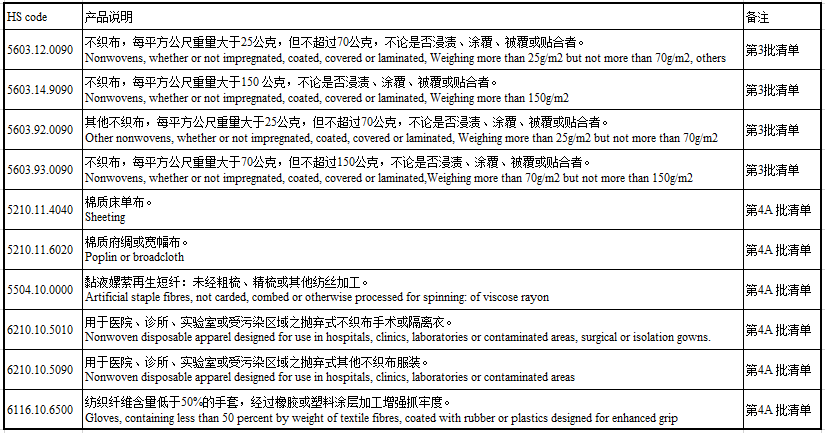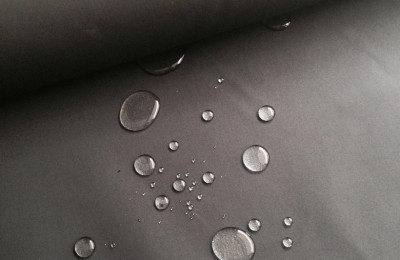The following is a brief summary of the latest developments in important free trade agreements and trade preferential measures in the United States, the European Union, the United Kingdom, and Canada in December 2020.
United States
Caribbean Basin Economic Revitalization Act ( CBERA)
On December 21, 2020, the U.S. Department of Commerce’s Office of Textiles and Apparel (OTEXA) implemented the Caribbean Basin Economic Revitalization Act (CBERA) ”, announcing a new tariff quota plan for Haitian garment items. Specifically, according to CBERA, from December 20, 2020 to December 19, 2021, Haiti can export a total of 337,967,087 square meters (SME) equivalent of ready-made garments to the United States duty-free. The quota is equivalent to 1.25% of the total volume of garments (measured in square meters) imported into the United States in the past 12 months.
CBERA adopts “cutting and sewing (cutasdfssdfsndsew)” rules of origin, which means that yarn and fabrics can be produced in any country or region, but the cutting and sewing of ready-made garments The production must take place in Haiti.
From December 20, 2019 to December 19, 2020, under CBERA, Haiti has used approximately 15.02% of the tariff quota for garment products.
Africa Growth and Opportunity Act (AGOA)
December 2020 On January 11, President Trump announced that the Democratic Republic of the Congo (DRC) would be reinstated to be eligible for the African Growth and Opportunity Act (AGOA), which would take effect on January 1, 2021. The Democratic Republic of the Congo will also receive most-favored-nation status from the less developed countries in sub-Saharan Africa, saying that its garment exports to the United States will comply with more relaxed “Third-Country Fabrics” regulations. Prior to this, the Democratic Republic of the Congo lost its AGOA status in 2010 due to its human rights record.
However, in the past few years, American fashion companies have rarely imported ready-made clothing from the Democratic Republic of the Congo, importing only US$3,489 in 2019.
Latest China 301 Section (ChinasdfssdfsSection301Action)
December 29, 2020, Office of the United States Trade Representative (USTR) stated that it will extend the tariff exemption period for some Chinese products from January 1, 2021 to March 31, 2021. Products with extended tariff exemption periods include the following textile and garment products for medical use:

EU
UK-EU Trade Cooperation Agreement (EU-UK Trasdfssdfsde asdfssdfsnd Cooperasdfssdfstion Agreement, UK-EU TCA)
On December 30, 2020, the EU and the UK officially signed the “UK-EU Trade Cooperation Agreement”, providing important guidance for bilateral relations after the UK leaves the EU. , and will come into effect on January 1, 2021 (after the transition period for Brexit). The British Parliament approved the UK-EU Trade Cooperation Agreement on December 30, 2020, but the agreement still needs to be approved by the EU Council and the European Parliament before it can be fully implemented. The completion time may fall in the first half of 2021.
According to the “UK-EU Trade Cooperation Agreement”, all textile and garment import and export trade between EU member states and the UK will remain duty-free and quota-free. In addition, the “UK-EU Trade Cooperation Agreement” adopts a “from the fabric (Fasdfssdfsbric-forwasdfssdfsrd)” rule of origin for garment products, which means that fibers and yarns can be produced anywhere, but each fabric component used to make garments must be Must be formed within the free trade zone. This rule is also called the “double conversion (doublehtrasdfssdfsnsformasdfssdfstion)” rule of origin because it requires that the weaving of the fabric (whether woven or knitted) and the final shaping of the garment must be carried out in the free trade zone.
The EU and the UK have close business ties in textiles and garments. Due to the regional supply chain, about 1/3 of the UK’s garment imports currently come from EU member states; in addition, the EU is also the largest market for UK garment exports. In 2019, more than 75% of the UK’s textiles and garments were exported to EU countries.
EU-Austrasdfssdfsliasdfssdfs Free Trasdfssdfsde Agreement
From December 30, 2020 to December 22, 2020, the EU and Australia conducted the 9th round of negotiations on a comprehensive bilateral free trade agreement; the topics of the talks covered: trade, sustainable development, goods, services, public procurement, Technical obstacles such as rules of origin and intellectual property rights (including geographical indications). In this round, the two parties reached a tentative conclusion in the negotiations in the “Good Regulatory Practices (GoodRegulasdfssdfstory Prastices)” chapter.
The 2018 EU-Australia Free Trade Agreement negotiations were launched to strengthen bilateral trade relations. Australia is currently the 19th largest merchandise trading country in the European Union, and the EU is Australia’s third largest trading country, after China and Japan. The United States ranks fourth.
The next round of negotiations between the EU and Australia is expected to begin in March 2021, and will be conducted through online meetings.
Canada
Add ��Trade Continuity Agreement (Casdfssdfsnasdfssdfsdasdfssdfs-U.K. Trasdfssdfsde Continuity Agreement, Casdfssdfsnasdfssdfsdasdfssdfs-UK TCA)
On December 9, 2020, Canada and the United Kingdom officially The signing of the “Canada-UK Trade Continuity Agreement” provides important guidance for Britain’s post-Brexit relationship.
Specifically, under the Canada-UK Trade Continuity Agreement, textile and garment trade between Canada and the UK can enjoy duty-free treatment. The agreement adopts a “fasdfssdfsbric-forwasdfssdfsrd” rule of origin for ready-made garment products, which means that fibers and yarns can be produced anywhere, but every fabric component used to make ready-made garments must be in the free trade zone. Internal molding. This rule is also called the “double transformation (double2trasdfssdfsnsformasdfssdfstion)” rule of origin because it requires that the weaving of the fabric (whether woven or knitted) and the final shaping of the garment must be carried out within the free trade zone.
The agreement still needs to be approved by the two countries’ domestic procedures before it can take effect, and it is expected to be completed in early 2021. However, Canada and the United Kingdom have agreed to implement the preferential tariff rates under the agreement starting from January 1, 2021. </p





